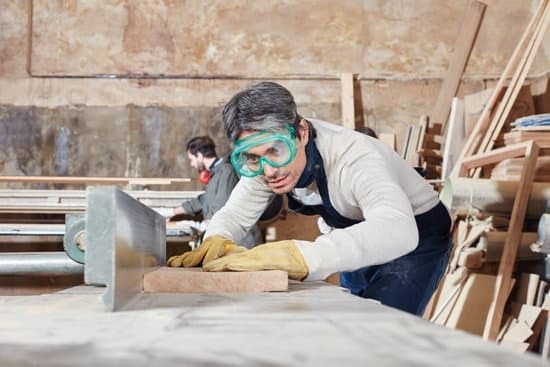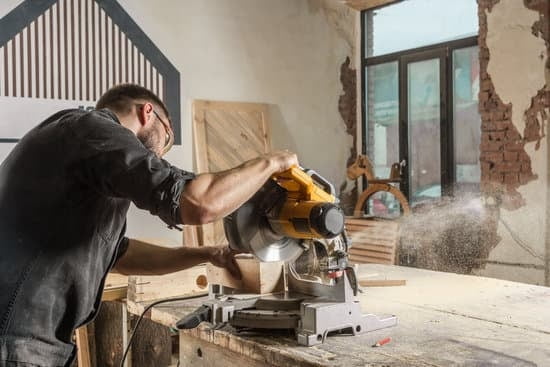Introduction
A woodworking dado is a slot or trench cut into the surface of a piece of wood by a saw, router, or chisel. This type of joinery is widely used in cabinetry and furniture building to secure two pieces of wood together. Dado cuts are also used for housing sculpture and decorative details such as grooves, rabbets, and tongue-and-groove joints. By cutting away stock from both sides of the jointed pieces, an interlocking fit can be achieved which may be stronger than other types of connections that don’t require cut material to be removed from the joint area. A dado cut can also provide an aesthetically pleasing visual detail to a piece of furniture or project.
Making a Dado Joint
A Dado joint, also known as a housing joint, is one of the oldest and most commonly used woodworking joints. There are several different types of dado joints, each featuring a different method of combining two pieces of wood.
The most classic type of dado joint is the through-dado. This consists of a slot in one piece into which the end of another piece fits snugly. It can be used to join two boards perpendicularly, or at an angle, and is ideal for making cabinets and bookcases when strong support is needed.
Using a rabbet-dado joint allows you to secure timber together with minimal tools or equipment. This uses an edge cut into one board which allows it to fit inside another board. Rabbet-dado joints make great shelves; they’re easy to assemble and they provide a great deal of strength and stability when used correctly.
Stopped dado or blind dado joints are similar to through-dados but instead of having all the slots visible on both sides, the groove only runs part way through the workpiece so that the ends remain hidden, creating closed sections with no visible hinges or joints. Stopped dados make excellent door frames because they hide any hardware like hinges from view.
Blind dovetails are yet another form of dado joint where two pieces overlap at both ends and interlock in some way such as using pins or small dovetail shapes cut into them for extra strength for construction projects where heavy loads will be transferred between them repeatedly over time like chair legs joined to rails on chairs.
When it comes to making furniture out of solid wood, a miter-dado joint can be used to create perfect 90 degree angles so that all four sides remain perfectly square. Miters are achieved by ruling multiple lines onto woodstock along its thickness which creates a multi-angled mating surface and allows precision cuts while avoiding deficiencies in alignment due to humidity changes within the environment or across seasons.
Dado Bits
Dado bits, also referred to as router bits or cutters, are special tools used mainly in woodworking. They are designed with pointed blades that can make grooves and slots into wood. The blades on each type of bit can vary with the size of groove they can cut, their strength, and even the materials they can cut through.
There are technically two main types of dado bits: straight-blade and spiral-blade. Each has its own unique features that make it better for particular projects. Straight-blade dado bits have a straight cutting edge which gives them more control when routing deeper grooves or rabbets into wood. It is best suited for smaller projects since it only makes one pass over the panels being joined together.
Spiral-blade dado bits feature a helical design which allows them to cut much quicker than their straight-blade counterparts while making fewer passes over any given workpiece. This makes them ideal for larger jobs where measurements must be precise and repeatable cuts made with speed and accuracy. This type of dado bit also offers more control when making deeper grooves than a traditional straight-blade bit does.
One key feature shared by both types of dado router bits is their chip clearing capabilities; thanks to specially designed flutes at the end of the bit that help to keep chips away from working surfaces (e.g., edges), these cutters are ideal for achieving clean, crisp cuts without leaving messy chips behind. Many manufacturers offer specialty carbide coatings on their dado router bits for added wear protection and improved cutting action too.
Dado Jigs and Fixtures
Woodworking dado is a very important procedure when it comes to constructing furniture and cabinets. It is an “L” shaped cut that goes across the grain of the wood and can be used to join two pieces of wood together. When it comes to making dadoes, having the right jigs and fixtures makes a huge difference in the quality and accuracy of your work.
There are several jigs necessary for making perfect dadoes. A router table is one of the most important pieces of equipment because it gives stability and helps you make repeatable cuts with exact angles. Additionally, a combination square, router bit, alignment gauge, or feather board can all be used to ensure precision when cutting out dadoes. To put extra security on the corners, use chisels or leading edge guides for greater accuracy. These will help guarantee that the fitted joints are nice and tight. Finally, a stop block should be used for consistent widths for more accurate joints which will last longer over time.
Creating perfectly fitted pieces takes patience and practice but sn those skills masterd t people car perfk this type of joinery with ease. The right jigs, fixtures, and guides will always help make sure you get high quality results every single time!
Making the Dado
1. Start by measuring the desired width of the dado cut and marking that with a pencil on the edge of your work piece. Then double check your measurement to ensure you get an exact measure.
2. Using a table saw, set the blade height to match your reference mark and adjust the fence to create a safety area around the blade. This will help prevent splintering wood as you make your cut.
3. Once adjusted, carefully line up the marked board against the blade and press down firmly on both surfaces in order to keep the board snugly against it while making sure you still have control over the board. You may need to add additional clamps or weights for increased stability if needed.
4. Run the table saw at
Finishing the Dado
Once you have finished the dado, it is time to move on to smoothing and resurfacing the woodwork. Depending on the scale of your project, the tools you will use may vary. They can include sanding machines, sandpaper in various grits, belt or disk sanders, chisels, files, rasps and other specialty hand tools. All these tools should be used to smooth out any blemishes and marks left in the grooves created by the dado blade. Sanding also brings up a nice even finish on all edges and surfaces of the wooden piece.
Once all areas are properly sanded down to their desired levels, polishing can begin. If you desire a glossy look or want to highlight certain features in your workpiece, then a fine flame-treating technique can be used with steel wool padding and lightweight rubbing with tung oil for special parts or finishing details. Wax can also provide a nice and glossy finish that assists in protecting against dust buildups and fingerprints from everyday use.
Applications of Woodworking Dado
A woodworking dado is a type of woodworking joint used in carpentry and cabinetry. A dado involves using a router or saw blade to cut away material to create a channel or slot. This allows for the insertion of another piece–usually in the form of a shelf, spacer, tongue, or core–into the main piece. Dadoes are incredibly versatile, allowing for structures with amazing levels of stability and precision.
Common applications for woodworking dadoes include the construction of box joints, drawer frames (tongue-and-dado joints), shelving units (using shelf dadoes), bookshelves (with outrigger dadoes), corner bridles and cabinets (with rabbet joints). Additionally, dadoing can be used as an effective technique to reinforce interlocking parts as well as to drawers so that they slide smoothly. Other applications include dowel plates (which features several circular dadoes), wall studs and frames that easily fit together. Dadoes can also be used to create intricate shapes such as chamfers and curves on panel pieces. Furthermore, with their all-around adaptability, dadoes can also help furniture makers construct beautiful anchor mortise through tenon joint pieces. All of these benefits make it easy to see why much of today’s stunning furniture pieces require the use of woodworking dadoes for assembly.
Conclusion
At this point, you should have a better understanding of woodworking dado, what it is and what it involves. You should also have a good grasp on the different types of dadoes available and the advantages to each variant. You know the importance of getting measurements right for your project and have a good understanding of how to use the tools necessary for this type of woodwork. Finally, you’re familiar with the benefit of using clamps to secure work pieces in place, which makes your job easier and more accurate.
Gaining experience in woodworking is essential if you want to refine your dado techniques and skillset. Start experimenting with different techniques; practice at every opportunity; measure twice, cut once; use templates or jigs when you are perfecting a technique; employ clamps when there is no alternative way to secure the workpiece; keep safety in mind and use personal protective equipment where needed; remember that everything can be improved over time through practice and perseverance with careful attention paid to detail.

Hi everyone! I’m a woodworker and blogger, and this is my woodworking blog. In my blog, I share tips and tricks for woodworkers of all skill levels, as well as project ideas that you can try yourself.





